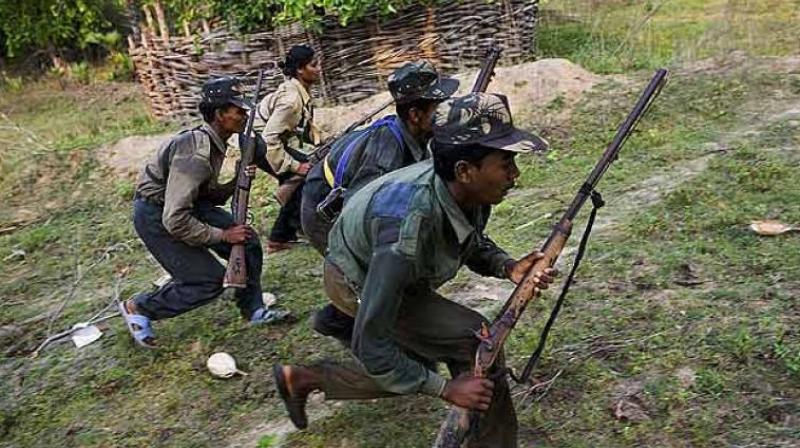Resolve glitches to peace in N-E

An assortment of heavily armed rebels ambushed a foot patrol of the paramilitary Assam Rifles in eastern Assam’s Tinsukia district bordering Arunachal Pradesh on Sunday, killing two soldiers in an unusual close-quarters combat. In a swift counter-attack launched by the Assam Rifles troopers, at least two of the rebels were gunned down and a few sophisticated weapons, including a G-3 rifle, were seized. The rebels triggered an improvised explosive device and attacked the troopers with rocket-propelled grenades and automatic weapons as the Assam Rifles patrol reached Wari Basti, near Jairampur, Tinsukia district, less than 10 km from the border with Arunachal Pradesh. It was actually a road opening party, a posse of troops who patrol a stretch in order to sanitise it ahead of major troop movements. On the surface, this may look like a routine insurgent activity in the woods of the Northeast, a region plagued by separatist rebellions for seven decades now. But the January 22 attack came in quick succession after three similar raids on the security forces in the same area starting November 16, 2016.
In the four ambushes since November 16, six soldiers and a civilian were killed, and at least 13 other soldiers were injured. All the incidents took place in the Assam-Arunachal Pradesh border region, on almost the route taken by the insurgents to access their bases in adjoining Myanmar across the Patkai ranges. More significantly, the raids were jointly carried out by the recalcitrant faction of the United Liberation Front of Asom called Ulfa (Independent), headed by its military chief Paresh Barua, and four Meitei insurgent groups from Manipur. The recent attacks on the security forces signify the consolidation of the new rebel umbrella that goes by the name of the United Liberation Front of Western South East Asia (UNLFWSEA). Formed two years ago at the initiative of Ulfa (I) supremo Paresh Barua and the chairman of the Khaplang faction of the National Socialist Council of Nagaland (NSCN-K), the umbrella had in its fold two smaller outfits active in Assam — the Kamtapur Liberation Organisation (KLO) and National Democratic Front of Bodoland (Songbijit). The Meitei insurgents groups from Manipur had then supported the new terror grouping from outside but had not joined it formally.
But the January 22 joint statement issued by M.M. Ngouba of CorCom, the coordination committee representing four Manipuri insurgent groups, and Paresh Asom alias Paresh Barua, Ulfa (I)’s military chief and vice-chairman, stating Sunday’s ambush was carried out jointly by five rebel groups confirmed the coming of Manipur’s valley-based rebel groups under the UNLFWSEA ambit. The four Manipuri outfits are the People’s Revolutionary Party of Kangleipak, People’s Revolutionary Party of Kangleipak (Progressive), Revolutionary People’s Front and the United National Liberation Front. A similar joint statement was issued on November 20 after the ambush the previous day in Tinsukia district in which three Army soldiers were killed and four others wounded. On both occasions, the rebels had codenamed their offensive as “Operation Barak”.
The following question now arises — if five or more major insurgent groups from the Northeast have come together under a new rebel platform and have managed to launch coordinated strikes, rather successfully, against the Indian security establishment, and, thereby, the Indian state itself, what has been the impact of all the peace processes launched over the years by the Indian government? An answer to this may be difficult to find but not impossible to attempt: first, New Delhi’s peace exercises have been seen to be mere attempts at achieving a temporary lull in insurgent activities rather than an exercise at finding lasting long-term solutions. This is largely because the government has failed, almost on all occasions, to come up with inclusive peace dialogues involving different insurgent groups active in a particular state or an area. Take the case of the Naga insurgency where New Delhi has been engaged in peace talks with the Isak-Muivah faction of the NSCN (NSCN-IM) since 1997. According to credible information accessed by this writer, the Centre is ready to let the Nagas have a separate flag, in addition to the tricolour, and also mention “Indian (Naga)” in passports issued to Nagas. Besides, New Delhi is also agreeable to the setting up and funding of a pan-Naga body to look after issues related to culture and tradition of Nagas residing in India. In lieu of its main demand of “sovereignty”, the NSCN-IM has been talking of a “shared sovereignty” with a view to lay claim to the distinct identity or the distinctiveness of the Nagas.
The general desire to allow the Nagas a separate flag or to mention “Naga” next to “India” in passports is perhaps the government’s way of agreeing to the idea of a “shared sovereignty”. Besides, the Constitution itself provides clear autonomy to the states in matters of recruitment of personnel in government departments and so on. Despite such concessions, why is it that groups like the NSCN-K and other smaller NSCN factions are outside the purview of peace talks? The same is the case with the Ulfa — the faction headed by Arabinda Rajkhowa and Anup Chetia are in talks but Mr Barua and his Ulfa (I) is engaged in battling the security forces. There may be vast economic benefits from extortion, arms smuggling and other activities that could be keeping certain factions out of the peace process, but local politics too cannot be ruled out as a possible factor. The Naga deal apparently is not making headway because the Congress government in Manipur is said to be against the Naga-dominated hill areas in the state getting autonomy under the Sixth Schedule. It apparently has no objection if autonomy is granted to the Naga areas in Manipur under a state provision. A lot of things need to be ironed out if a semblance of order can be restored in this region.

